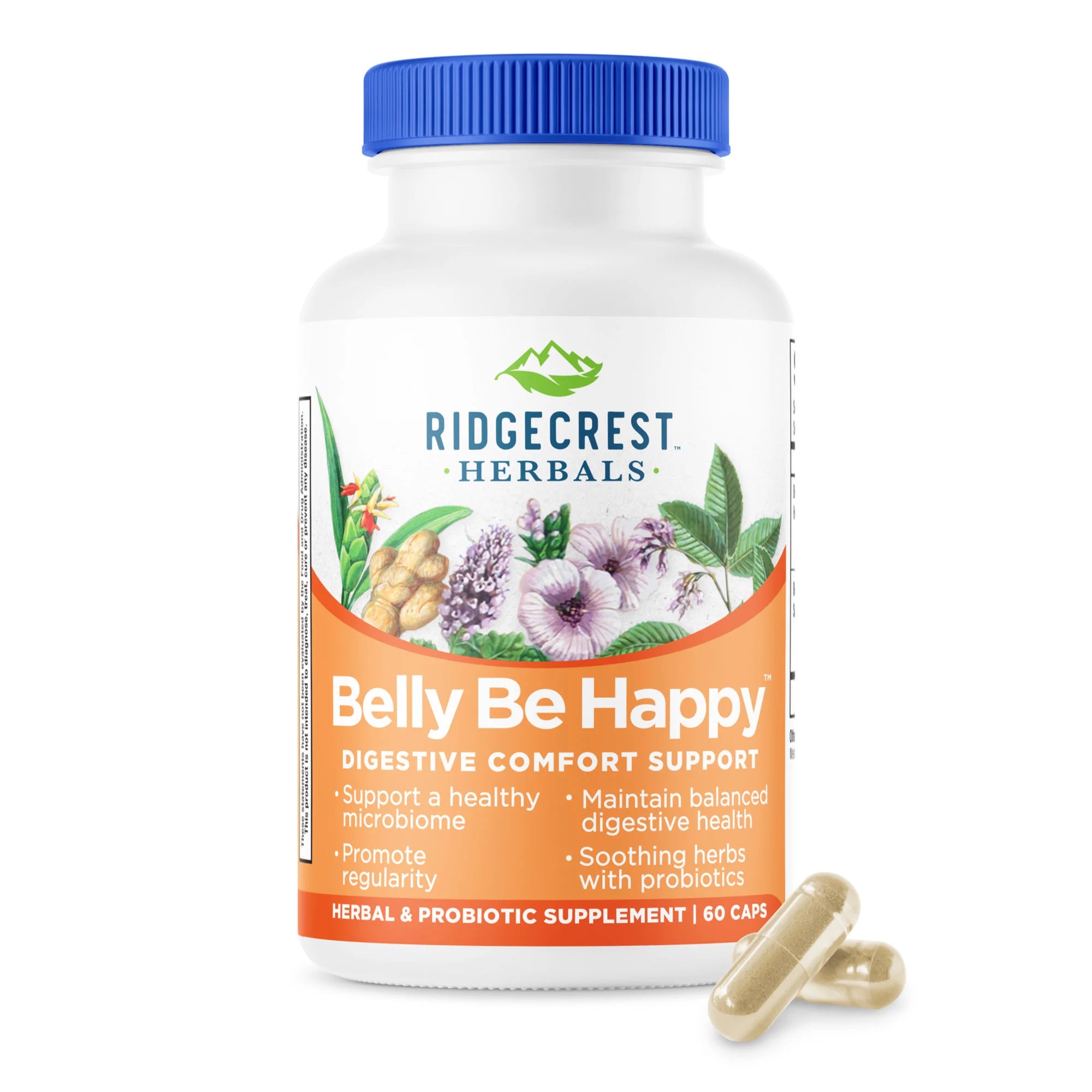Have you ever been confused about which supplements are the most important to take? Is it resveratrol this week? Collagen? CBD? After years of managing a supplement store, I narrowed the numerous options down to what supplements I believe are the most important for your health. Below is a brief explanation of what I call the “Vital 5.”
PROBIOTICS
The emerging research about the microbiome and how it affects and modulates cellular function demonstrates how critical gut health is. Probiotics modulate immune function, mental health, digestive health, energy, stress, and nutrient balance.
What do I look for in a probiotic supplement?
Supplements, by regulatory standards, are required to deliver the amount of probiotics claimed on the package up until the expiration date. Look for one that yields a minimum of 10-billion units per capsule. You can reference my 2022 Almanac article on picking a probiotic and my 2018 article on the microbiome for more information. If budget is a concern, or if you tend to forget your refrigerated probiotics, shelf-stable probiotics are a great choice. The most common are Lactobacillus acidophilus, Bacillus coagulans, and Lactobacillus sporogenes.
Favorite brands: RidgeCrest Herbals Intelligut, Just Thrive, Renew Life, Flora, MegaFood, and Nutrition Now (PB8)
For kids or those who prefer gummies: Smarty Pants, UP4, Rainbow Light, and Olly
ESSENTIAL FATS: OMEGA-3 and OMEGA-6
Omega-3 and Omega-6 are essential fats. The term essential means your body doesn’t manufacture them. You have to consume them. To learn more, read Fats that Heal, Fats that Kill by Udo Erasmus.
The best sources of omegas are fish-based due to their high polyunsaturated fat content (PUFAs). Krill gets a good rep, but it does lack the extensive scientific body of evidence that fish oil has to back it up. There are also plant solutions, including chia, algae, hemp, nuts, and flax. The drawback with plant-sourced omegas is they are primarily alpha-linolenic acid (ALA)-based, and the research regarding the benefits of ALA is lacking (Stark et al., 2008). Your body also has to convert ALA omegas into the usable forms EPA and DHA, which happens at about 0%-8% in males and 9%-21% in females (Higdon et al., 2019). For comparison, fish-based omegas synthesize at around 85%-95% (Higdon et al., 2019). So if your digestion isn’t the best or you’re missing a gallbladder, the yield of omega-3s you’re getting is relatively low by comparison to a fish-based omega. Research also suggests consuming diets high in ALA omegas inhibits the conversion of fats to DHA (Gibson et al., 2011).
Ideally, adults should be consuming at least 5 grams (5,000 mgs) of Omega-3 and -6 daily, with a minimum of 1 to 2 grams (or 1,000 to 2,000 mgs). Children over six should be getting at least 0.5 to 1 grams daily (or 500 to 1,000 mg).
What do I look for in an Omega-3 and -6 supplement?
Look for EPA and DHA content. This is what makes some oils more expensive than others. You want at least 600 mg of EPA and DHA combined. The ratio isn’t your biggest concern because they can be retroconverted (Higdon et al., 2019). EPA is most beneficial for supporting balanced inflammatory response and is great for cognitive function. DHA helps most with cellular membrane function. DHA helps improve electrical and signal transfer from the brain, making it great for eye health, nerves, heart health, and immunity (Higdon et al., 2019).
You should note that your fish oil shouldn’t smell “fishy,” it shouldn’t make you burp unless you lack a gallbladder or sufficient digestive enzymes, and companies should readily provide you with testing analysis if you request it. This is because of potential heavy metal contamination, which occurs in fish and plant-based products.
Favorite vegan-friendly brands: Udo’s oil, Barleans, Nordic Naturals (Algae Omega)
Favorite brands: Udo’s Oil, Barleans, Nordic Naturals, Wiley’s Finest, NutriGold, Carlson
MULTIMINERALS
Minerals are also considered essential nutrients: you have to consume them to meet your nutritional needs. Unfortunately, over the years, we’ve depleted our soil of the nutrients we need to be healthy (Davis et al., 2013, #), and we’ve caused desertification and degradation of our farmlands (Shukla et al., n.d.) (Olsson et al., 2019). For instance, you’d have to eat eight oranges today to reach the equivalent of one orange back in 1950.
Why are minerals essential?
The human body runs on electricity. It keeps us alive; it keeps our hearts beating and our brains firing. Minerals are building blocks of hormones, carry oxygen to our cells, and are involved in every cellular function of the body (sodium and potassium pumps, anyone?) (Harvard Health Publishing, 2019).
What types of minerals are there?
There are two main categories of minerals: macrominerals and microminerals (or trace minerals). The body requires macrominerals in more significant amounts. Macrominerals include calcium, chloride, magnesium, phosphorus, potassium, sodium, and sulfur. On the other hand, trace minerals are only needed in small amounts. Trace minerals include but are not limited to chromium, copper, fluoride, iodine, iron, manganese, molybdenum, selenium, and zinc (Harvard Health Publishing, 2019).
How do I get enough minerals in my diet?
Seek out local produce grown on land that uses regenerative agricultural practices. Make sure you’re eating enough produce daily to yield the right amount of nutrients, or you can supplement using a multimineral formula.
Favorite brands: Trace Minerals’ Concentrace, MacroLife Greens (my kids love the kids one!), MegaFood’s Balanced Minerals, Dr. Christopher’s Vitalerbs, Salus Haus Floradix Epresat (liquid)
DIGESTIVE ENZYMES
Enzymes are the catalysts to life, which includes breathing. If you struggle with digestive concerns, enzymes are a great addition to your daily regimen. They target gas, bloating, constipation, and other digestive upsets. And if you’re missing part of your colon or gallbladder or have food sensitivities, they are necessary for nutrient absorption and utilization. Unfortunately, our bodies also produce less of them as we age (Axe, 2021).
What kind of enzymes are there?
Here’s a simple breakdown of the primary enzymes found in most formulas:
|
Enzyme |
Purpose |
|
Protease |
Protein digestion |
|
Lactase |
Dairy digestion |
|
Lipase |
Fat digestion |
|
Amylase |
Carbohydrate digestion |
|
Alpha galactosidase |
Legume digestion |
|
Peptidase |
Gluten and casein digestion |
|
Pectinase |
Pectin digestion |
|
Invertase |
Sucrose sugar digestion |
|
Glucoamylase |
Maltose sugar digestion |
Which enzyme is right for me?
The correct enzymes you need depend on what health concerns you’re trying to address.
|
If You: |
Then Try: |
|
Struggle with food sensitivities |
Digest Spectrum by Enzymedica Devigest by Arthur Andrew Medical |
|
Are missing a gallbladder or have trouble digesting fats |
Lypo Gold by Enzymedica |
|
Have chronic colon health concerns |
Digest Gold by Enzymedica |
|
Are looking for a daily enzyme support product |
Source Naturals Daily Essential Enzymes American Health’s Original Papaya Enzyme Digest Basic by Enzymedica |
How much should I take?
The general rule is to take one capsule 10 minutes before a meal. However, if you’re dealing with a chronic illness, you can raise your dosing or increase the amount taken to one capsule six times daily.
Contraindications: enzymes will also work while you’re on medications. If you are on any medications where increased absorption is a risk, you will need to take an enzyme at least two hours before or after your prescription.
Favorite brands: Enzymedica, Arthur Andrew Medical, Source Naturals, American Health
MULTIVITAMIN
Multivitamins contain essential nutrients that are important and required for your health. The trick with picking a multivitamin is the quality of nutrients. Food is always best.
Multivitamins: Good, Better, Best
At the health store I managed, we sold vitamins of different ranges to fit budgets, but we never sold anything we didn’t think was a quality product. Your best vitamins will be made of whole foods. The better ones will consist of food-based and vitamin isolates, and your good category will typically consist only of vitamin isolates. Avoid multivitamins with fillers such as magnesium stearate, food dyes, BHT, gelatin, talc, titanium dioxide, zinc oxide, corn starch, modified cornstarch, sodium molybdate, sodium selenate, manganese sulfate, and polyvinyl alcohol.
How much should I take?
Ideally, you’re taking one capsule or tablet three times daily. While one-a-days are convenient and better than not taking anything, they also limit the amount of nutrition you can absorb. We don’t sit down and eat all of our food in one sitting for the day. Instead, we eat throughout the day because our bodies absorb nutrients easier that way. The same applies to a multivitamin.
Favorite Good: Source Naturals, Solaray, Now
Favorite Better: Irwin Naturals, Rainbow Light, Nature’s Way
Favorite Best: MegaFood, NutriGold, New Chapter, Dr. Christopher’s Vitalerbs
For kids and teens: ChildLife, Rainbow Light, Smarty Pants, New Chapter, Nordic Naturals, MegaFood, Nature’s Way
References
Axe, J. (2021, September 29). Digestive Enzymes Benefits, Foods, Functions and More. Dr. Axe. Retrieved March 17, 2022, from https://draxe.com/nutrition/digestive-enzymes/
Davis, D. R., Epp, M. D., & Riordan, H. D. (2013, June 18). Changes in USDA Food Composition Data for 43 Garden Crops, 1950 to 1999. Journal of the American College of Nutrition, 23(6), 669-682. https://www.tandfonline.com/doi/abs/10.1080/07315724.2004.10719409
Gibson, R. A., Muhlhausler, B., & Makrides, M. (2011, March 02). Conversion of linoleic acid and alpha-linolenic acid to long-chain polyunsaturated fatty acids (LCPUFAs), with a focus on pregnancy, lactation and the first 2 years of life. Wiley Online Library. Retrieved March 16, 2022, from https://onlinelibrary.wiley.com/doi/full/10.1111/j.1740-8709.2011.00299.x
Harvard Health Publishing. (2019). Vitamins and Minerals. HelpGuide.org. Retrieved March 17, 2022, from https://www.helpguide.org/harvard/vitamins-and-minerals.htm
Higdon, J., Drake, V. J., Angelo, G., Delage, B., & Jump, D. B. (2019, June). Essential Fatty Acids | Linus Pauling Institute | Oregon State University. Linus Pauling Institute. Retrieved March 16, 2022, from https://lpi.oregonstate.edu/mic/other-nutrients/essential-fatty-acids
Olsson, L., Barbosa, H., Bhadwal, S., Cowie, A., Delusca, K., Flores-Renteria, D., Hermans, K., Jobbagy, E., Kurz, W., Li, D., Sonwa, D.J., & Stringer, L. (2019). Chapter 4 : Land Degradation — Special Report on Climate Change and Land. IPCC. Retrieved March 16, 2022, from https://www.ipcc.ch/srccl/chapter/chapter-4/
Shukla, P.R., Skea, J., Buendia, E. C., Masson-Delmotte, V., Portner, H.O., Roberts, D.C., Zhai, P., Slade, R., Connors, S., Diemen, R. v., Ferrat, M., Haughey, E., Luz, S., Neogi, S., Pathak, M., Petzoid, J., Portugal Pereira, J., Vyas, P., Huntley, E., … Malley, J. (n.d.). Summary for Policymakers. IPCC. Retrieved March 16, 2022, from https://www.ipcc.ch/site/assets/uploads/sites/4/2019/12/02_Summary-for-Policymakers_SPM.pdf
Stark, A. H., Crawford, M. A., & Reifen, R. (2008, June 01). Update on Alpha Linolenic Acid. Nutrition Reviews. Retrieved March 16, 2022, from https://academic.oup.com/nutritionreviews/article/66/6/326/1840653?login=true





1 comment
Lyndsey Rullman
Thank you for this. Glad to see I already take all these supplements. For my personal self, I like to take probiotics 2 weeks on and 2 weeks off. My other favorite supplments that helps me immensely is MSM. Thanks again for this article.
Leave a comment
All comments are moderated before being published.
This site is protected by hCaptcha and the hCaptcha Privacy Policy and Terms of Service apply.